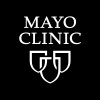
QuikClot Control+ Hemostatic Dressing Use in Mild to Moderate Bleeding
HemostasisQuikClot Control+ Hemostatic Dressing (QuikClot+) is indicated for temporary control of internal organ space bleeding for patients displaying Class III or Class IV Bleeding. It may also be used for control of severely bleeding wounds such as surgical wounds and traumatic injuries. QuikClot Control+ is also indicated for temporary control of mild to moderate bleeding in cardiac surgical procedures. QuikClot Control+ is also indicated for use to control bleeding from bone surface following sternotomy.

Nd:YAG Laser Hyaloidotomy for Premacular Hemorrhage in Diabetic Eyes
Proliferative Diabetic RetinopathyPremacular Subhyaloid hemorrhage is a sudden profound loss of vision in eyes with proliferative diabetic retinopathy (PDR). Pars plana vitrectomy is the treatment of choice for premacular hemorrhage in eyes with proliferative changes. Nd:YAG laser hyaloidotomy has been used to evacuate the premacular hemorrhage

Oxytocin Receptor Expression in Pregnancy
Post-AbortionHemorrhage1 moreThis study aims to determine when during gestation oxytocin receptor (OXTR) expression increases in the myometrium, which will contribute new insight to the management of obstetric hemorrhage and our understanding of normal and abnormal labor.

The Randomized OPTIMAL-ACT Trial
Coronary Artery DiseaseIschemic Heart Disease2 moreThe purpose of this study is to find the ideal range of the activated clotting time (ACT) during percutaneous coronary intervention (PCI) that is associated with lowering the rate of undesirable medical outcomes

Evaluation of the Effects of Levonorgestrel-releasing Intrauterine Device and Dydrogestreone on...
Abnormal Uterine BleedingThis study was retrospectively collected from patients who were diagnosed with abnormal uterine bleeding and received oral dydrogesterone therapy for at least six months or who were administered an intrauterine device containing levonorgestrel at least six months ago, and prospectively Short form 36 (P-36); It covers the comparison of the Quality of Life Scale and the Female Sexual Function Scale (FSFI) by asking over the phone.

Early Use of Cryoprecipitate With Major Hemorrhage Protocol (MHP) Activation
Trauma InjuryThe purpose of this trial is to compare standard of care (SOC) massive transfusion protocol to SOC massive transfusion protocol plus early use of cryoprecipitate (within 90 minutes of emergency department arrival).

Rescue Intracranial Stenting in Acute Ischemic Stroke
Acute StrokeIschemic Stroke9 moreIn acute ischemic stroke caused by intracranial large vessel occlusion, rescue intracranial stenting has been recently a treatment option to achieve recanalization in patients with the failure of mechanical thrombectomy. Nevertheless, there are few studies supporting this beneficial treatment in two cerebral circulations. We aimed to analyse whether the use of rescue intracranial stenting would improve prognosis of patients at 3 months.

Oxytocin vs Carbetocin at Cesarean Delivery in Women With Morbid Obesity
Post Partum HemorrhagePostpartum hemorrhage (PPH) is a major cause of maternal death worldwide. Oxytocin is the most commonly used uterotonic drug for the active management of third stage labor, to reduce the risk of PPH and help deliver the placenta. Carbetocin is currently recommended by the SOGC (Society of Obstetricans & Gynecologists of Canada), and is a relatively newer drug with a longer duration of action. It has been previously demonstrated that women with elevated BMI require higher doses of these drugs to induce adequate uterine contraction and dose finding studies undertaken at Mount Sinai Hospital have shown that the ED 90 in obese patients to be carbetocin 80 mcg and oxytocin 1IU. Furthermore, previous studies have indicated that the use of carbetocin over oxytocin in non-obese popultion is associated with reduced bleeding and requirement of additional uterotonic medications. No study has directly compared the two drugs in obese parturients in a head to head clinical trial; therefore a double-blind randomized controlled trial is necessary to show the non-inferiority of carbetocin against the current standard of care at Mount Sinai hospital, which is oxytocin.

Comparison Study of Oxytocin Versus Tranexamic Acid and Etamsylaye Versus Placebo(Saline)
Blood LossSurgical2 moreComparison Study Between Oxytocin Versus Tranexamic Acid and Ethamsylate Versus Normal Saline as Pre-operative Administration.

Antiplaque/Antigingivitis Efficacy of Essential Oil Mouthrinses in Six-Month Study
PlaqueGingivitis2 moreThe objective of this randomized, single-center, examiner-blind, controlled, parallel group, six-month clinical study is to compare the antiplaque/antigingivitis potential of a no-alcohol essential oil containing mouthrinse and an alcohol essential oil containing mouthrinse. A negative control group using only an ADA Accepted anticavity toothpaste will be included.
